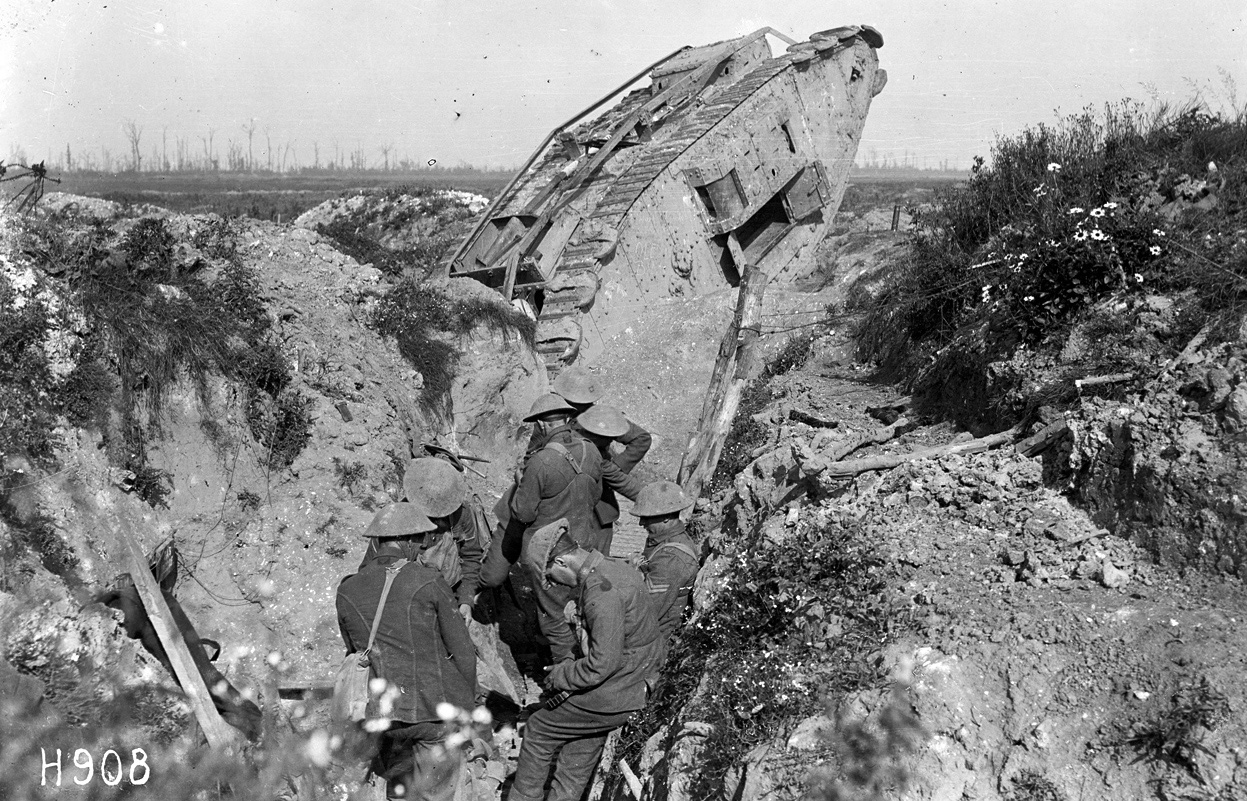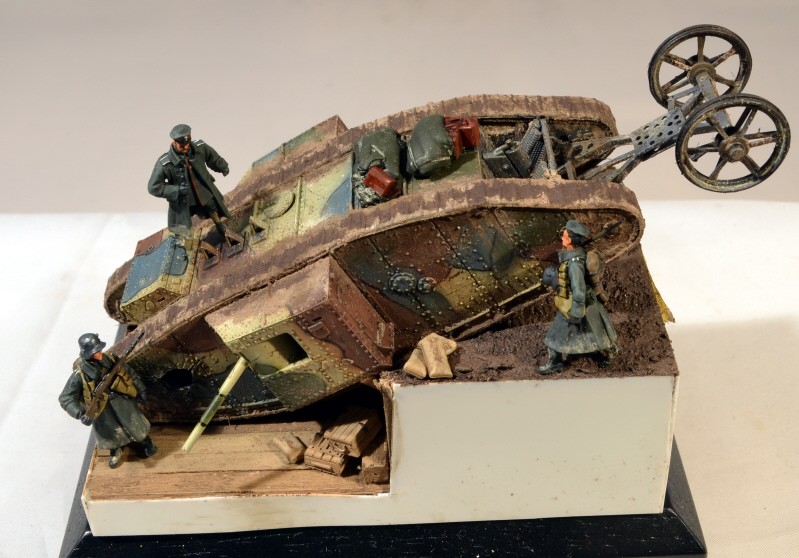Quoted Text
Your trench looks way too wide and shallow to me. From all the pics I have seen, WWI trenches were only about two men wide and some only wide enough for one man to pass. They were also slightly deeper than head height so the soldier would be fully covered when in it. Check out these images to see what I mean.
I agree with Gino, your trench is a bit wide, BUT...by 1917 the Germans had learned to widen the trenches as an anti-tank defense, and at Cambrai in November 1917, the trenches were a proscribed 12ft wide at most places along the Hindenburg line. The British realized this, and developed a tactic where fascine tanks would lead the attack, drop the fascine into a wide trench and cross, while following tanks provided enfilading fire on the trench, then they would follow over the fascine. Of course, those were Mark IV tanks, and yours is an earlier Mark I tank, which puts it before 1917, and likely before the Germans decided to widen their defensive lines. However, your diorama is superb, and you can always claim the Mark I has fallen into a prepared Artillery position behind the lines, which would have been wider than a trench-- and explains the German troops nonchalantly walking around and over it-- something they were unlikely to do on the front line trenches in clear view of the enemy, and in easy range of enemy artillery which would have been used to destroy any captured vehicle in sight. By the way, except for the photo of Hyacinth stuck in the Hindenburg Line at Cambrai above,-- and one other from Cambrai above, many of the photos are of Mark IV tanks being tested on German training grounds (Beutepanzers) or on British training grounds-- so the depiction of a "combat" trench with a tank in it can be a tricky proposition.
VR, Russ












































